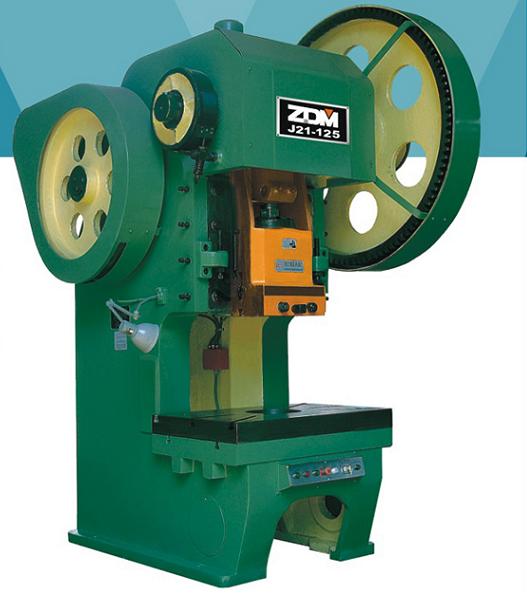|
Punch Press ? What is it ???
Steel products are everywhere, from cars to computers to grills. The process of creating holes in steel to accommodate almost any metallic design can involve several entirely different methods: One method is called "milling," and in some cases "machining," where holes are slowly ground into steel by a powerful drilling machine not much different than a hand drill-only on a much larger scale. A much faster method for creating holes in steel is called "stamping," which involves a machine called a punch press. A punch press is able to quickly apply ten, twenty, fifty, or five hundred tons (or more) of pressure to a slab of steel. The press uses a punch-and-die system, where the "punch" is a protruding element and the "die" is a flat surface with various recessed areas for the protruding element to stamp. The protruding element (usually on top) smashes into the steel (i.e. it "punches" or "stamps" the steel) with many tons of pressure, removing a portion of the steel slap called a slug, which usually falls through the recession in the die. The whole process can take less than a second and a complete metal part is usually the result. This stamping process is by far the fastest way to put holes into metal products. Often, there is a very high cost for creating a punch and die setup intended for a punch press, although the rewards of such a system is that the cost per piece is significantly less than any other method after the setup has been created. While a stamping operation is ideal for high production runs, sometimes million piece runs are not required and it is therefore not feasible or logical. Without high production, it is usually difficult to justify the cost of a stamping setup. When the cost of making a stamping operation is not justifiable, buyers can turn to a process called CNC Punching. Whereas Stamping is designed for high production runs of ten thousand parts or more, CNC Punching is designed to optimize short run costs, involving part quantities of ten thousand pieces or less. CNC Punching is by far the fastest way to put holes into steel without paying upfront for a punch and die stamping setup. The term "CNC" means "Computer Numerical Control," which is a system of using computer technology to effectively manipulate machines in very precise ways. In the case of CNC Punching, a computer code is used to instruct a stamping machine (similar to a punch press) to punch holes into steel. Whereas the stamping press can create a part in a single hit, the CNC punch press creates a part with multiple hits-very quickly. Usually a turret or tooling storage device feeds the correct punch and die into the punching center of the machine. Then, the machine receives precise commands from the computer in order to punch single holes in the locations specified by the computer program. Many CNC punching machines can punch a hole in half a second or less. While the creation of the parts takes longer, there is no need to wait for an expensive punch and die system to be made. Milling is used in cases where there are either only twenty parts or less (prototypes) or unusually thick or steel designs that are not appropriate for punching. Stamping is used in cases where there are many parts to be made. CNC Punching is used to create an intermediate amount of parts. Which method you choose will largely depend on how many parts you require. Joel Barrett has significant experience operating CNC Punching equipment. He recommends that companies looking for OEM metal parts consider cnc punching services Berrien Metal Products, Inc. Phone: 800-978-5300 Fax: 269-695-5300 Website: http://www.metalfabrications.com/services-cnc-punching-stamping.html Article Source: https://EzineArticles.com/?expert=Joel_Barrett
|





